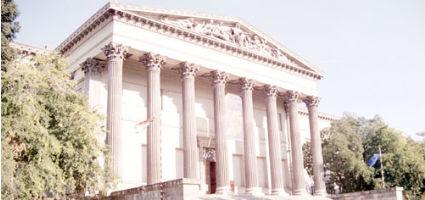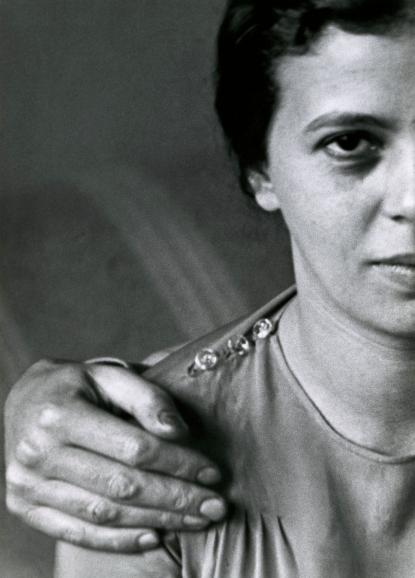2024. May 16. Thursday
Hungarian National Museum - Budapest
 |
Address: 1088, Budapest Múzeum körút 14-16.
Phone number: (1) 338-2122
E-mail: info@hnm.hu
Opening hours: Tue-Sun 10-18
|
The exhibition has closed for visitors.
2011.09.30. - 2011.12.31.
Museum tickets, service costs:
|
Ticket for adults
|
1100 HUF
|
|
|
Ticket for students
|
550 HUF
|
|
|
Ticket for soldiers
|
550 HUF
|
|
|
Ticket for pensioners
|
550 HUF
|
|
|
Ticket for families
(2 adults + children)
|
1150 HUF
|
/ family
|
|
Individual guide
|
400 HUF
|
/ capita
|
|
Group guide
(max. 5 people)
|
1800 HUF
|
/ group
|
|
Group guide
(11-15 people)
|
6000 HUF
|
/ group
|
|
Group guide
(max. 15 people)
|
5500 HUF
|
/ group
|
|
Group guide
(16-25 people)
|
9700 HUF
|
/ group
|
|
Group guide
(1-5 people)
|
1500 HUF
|
/ capita
|
|
Group guide
(6-10 people)
|
13000 HUF
|
/ group
|
|
Group guide
(11-15 people)
|
16000 HUF
|
/ group
|
|
Group guide
(16-25 people)
|
24000 HUF
|
/ group
|
|
Group guide for students
(max. 25 people)
|
4500 HUF
|
/ group
|
|
Group guide for students
(max. 15 people)
|
6000 HUF
|
/ group
|
|
Group guide for students
(max. 25 people)
|
12000 HUF
|
/ group
|
André Kertész has never had a retrospect exhibition with all the necessary emphasis added to his oeuvre. The exhibition that first opened at the Jeu de Paume in September 2010, then travelled on to Winterthur and Berlin is now arriving at the Hungarian National Museum, intending to make up for what has been missed.

Most of the photos are vintages and copies the artist himself approved of showing. The intention of the organizers was to reveal the continuity and unity behind the ideas of Kertész, to which he remained faithful throughout his career.
The review involves 250 photos and articles, located on 1000 m2 in the József Nádor Room of the Hungarian National Gallery.
The career of Kertész lasted over half a century (1894-1985). He is one of the many Hungarian born artists who are acclaimed as influential figures in art. The fame of Robert Capa, László Moholy Nagy , Brassaï, Márton Munkácsi and André Kertész has brought international interest in Hungarian photo art.
He took his first shot in 1912. During WWI he broke from traditional photography and show photos of military daily life with an artistic vein.
In 1925 he travelled to Paris where he almost immediately discovered the artistic scene of Montparnasse. His talent was soon discovered. In two years' time he could open his first exhibition at the Au gallery Sacre du Pritemps. In 1933 he finished his famous series Distortions (Torzulások in Hungarian). In 1934 he published the album about his wonderings in the streets and parks n Paris, on the banks of Seine, the (Paris through the Eyes of André Kertész).Paris vu par André Kertész. He often published his photos in the most important magazine of the era, the VU.
In 1936 he signed a contract with the agency Keystone and moved to New York. However, their cooperation was short. Kertész began working for illustrious magazines such as the House and Garden, the Harper's Bazaar or the Vogue. In 1944 he became a citizen of the USA. From 1949 he worked in the field of interior design.
The Museum of Modern Art presented an exhibition in of Kertész photos in 1964, then the exhibition travelled on to Tokyo, Stockholm, Budapest, London, Paris etc. Around the mid 1970, his interest turned towards the view from the window of his flat in New York. He died in his home in Washington Square in 1985.

Most of the photos are vintages and copies the artist himself approved of showing. The intention of the organizers was to reveal the continuity and unity behind the ideas of Kertész, to which he remained faithful throughout his career.
The review involves 250 photos and articles, located on 1000 m2 in the József Nádor Room of the Hungarian National Gallery.
The career of Kertész lasted over half a century (1894-1985). He is one of the many Hungarian born artists who are acclaimed as influential figures in art. The fame of Robert Capa, László Moholy Nagy , Brassaï, Márton Munkácsi and André Kertész has brought international interest in Hungarian photo art.
He took his first shot in 1912. During WWI he broke from traditional photography and show photos of military daily life with an artistic vein.
In 1925 he travelled to Paris where he almost immediately discovered the artistic scene of Montparnasse. His talent was soon discovered. In two years' time he could open his first exhibition at the Au gallery Sacre du Pritemps. In 1933 he finished his famous series Distortions (Torzulások in Hungarian). In 1934 he published the album about his wonderings in the streets and parks n Paris, on the banks of Seine, the (Paris through the Eyes of André Kertész).Paris vu par André Kertész. He often published his photos in the most important magazine of the era, the VU.
In 1936 he signed a contract with the agency Keystone and moved to New York. However, their cooperation was short. Kertész began working for illustrious magazines such as the House and Garden, the Harper's Bazaar or the Vogue. In 1944 he became a citizen of the USA. From 1949 he worked in the field of interior design.
The Museum of Modern Art presented an exhibition in of Kertész photos in 1964, then the exhibition travelled on to Tokyo, Stockholm, Budapest, London, Paris etc. Around the mid 1970, his interest turned towards the view from the window of his flat in New York. He died in his home in Washington Square in 1985.
